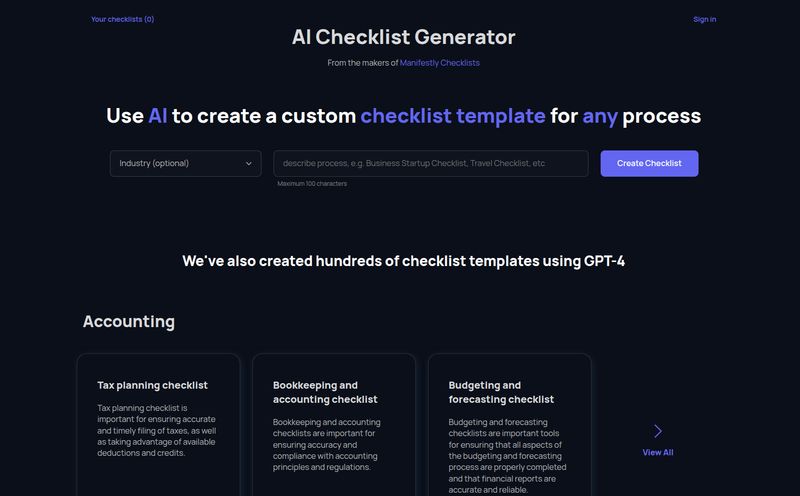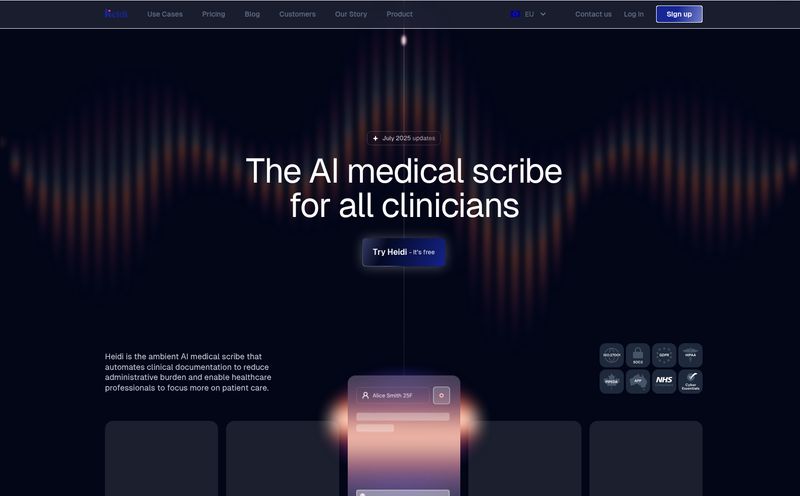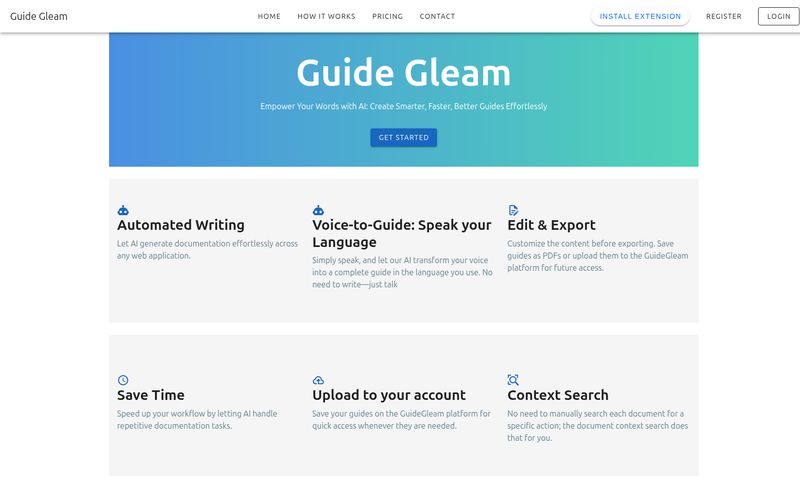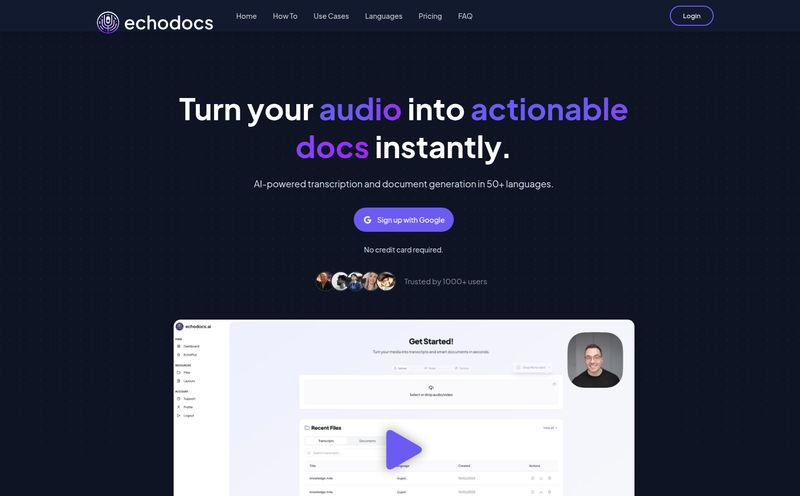If you're a personal injury attorney, you probably didn't get into law because you had a burning passion for sifting through mountains of medical records or drafting the same kind of demand letter for the thousandth time. You got into it to fight for your clients. To strategize. To win. But the administrative grind? It’s a beast. A time-sucking vortex that pulls you away from the work that actually moves the needle.
For years, we've been hearing about how AI is going to change everything. As someone who lives and breathes tech trends, I've seen that promise play out in dozens of industries. SEO, marketing, finance... you name it. But the legal world has always felt a bit more... traditional. A bit more resistant.
So when a tool like Tavrn pops up on my radar, claiming to use AI to generate demand letters and medical chronologies in 24 hours, my curiosity is definitely piqued. Is this just another piece of shiny new tech, or is it a genuine game-changer for PI firms? I decided to take a closer look.
What Exactly is Tavrn? (And Why Should You Care?)
At its core, Tavrn is a platform designed to do one thing very well: take the most tedious, time-intensive parts of building a personal injury case and automate them with artificial intelligence. We're talking about drafting comprehensive demand letters and organizing complex medical histories into neat, usable chronologies.
The big, flashy promise is speed. They claim a 24-hour turnaround on demand letters. Let that sink in. What currently takes you or your paralegals days, or even weeks, could potentially be done while you sleep. The goal isn't just to be faster, but to help you settle cases quicker and, as they claim, for more. That's a bold claim, and it's the kind of thing that makes you lean in a little closer.

Visit Tavrn
Deconstructing the Tavrn Workflow
Looking at their process, it's clear they've thought about the entire pre-litigation pipeline. They break it down into a five-step flow that should look pretty familiar to any PI attorney:
- Client Intake: It starts where every case does, gathering the initial client information.
- Medical Retrieval: The system then helps in corralling all the necessary medical records, which is a headache in itself.
- Medical Chronology: This is where the AI really gets to work, analyzing those records and organizing the timeline of events, treatments, and diagnoses.
- Demands in Hours, Not Days: The platform uses that chronology and other case details to generate a detailed demand letter.
- Find Key Evidence Instantly: Finally, it presents everything in a way that helps you review the case, spot the critical evidence, and build your strategy.
They toss around some pretty eye-popping numbers on their site, like a 90% reduction in medical review time and generating demand letters 2X faster. I also saw a stat about a “15% average settlement reduction,” which I have to assume is a typo. Honestly, it made me chuckle. No one advertises that their tool will get you less money. My guess is they meant a 15% increase in settlement value or maybe a 15% reduction in the negotiation timeline. A small slip, but a human one!
The Core Features That Make Tavrn Tick
Let's get into the guts of the machine. It's not just about a single button; it's a few key capabilities working together.
AI-Powered Demand Letters in a Day
This is the headline act. The traditional process is slow and fraught with potential for error. You're trying to weave a compelling story while juggling facts, figures, and medical jargon. Tavrn’s AI aims to do the heavy lifting, creating a structured, customized legal narrative that lays out the facts, liability, and a detailed breakdown of damages. It’s like giving a master chef perfectly prepped ingredients—they can still cook a Michelin-star meal, but they can do it faster and focus on the artistry.
Untangling Medical Records with AI Chronologies
If demand letters are the main event, medical chronologies are the essential opening act that nobody wants to perform. It's painstakingly detailed work. Reading through hundreds of pages of doctors' notes to build a coherent timeline is the definition of non-billable drudgery. Automating this doesn't just save time; it saves sanity. An AI that can read, understand, and sequence medical records is, frankly, a bionic paralegal that doesn't need coffee breaks.
The Good, The Bad, and The AI
No tool is perfect, and as an analyst, I'm always looking for the trade-offs. Tavrn has some clear strengths and some important caveats. The upside is obvious: a massive injection of speed and efficiency into your workflow. It frees up your highly skilled human brainpower for tasks that AI can't do, like negotiating with adjusters, counseling clients, and developing novel legal strategies. Its a huge potential boost for a firm's capacity without immediately hiring more staff.
However, the main caveat is the same for any powerful AI tool: you can't just blindly trust it. The documentation itself notes that the AI's output may require human review. And that's not a weakness; it's a reality. You, the attorney, are still the captain of the ship. The AI is your advanced navigation system, but you still need to check the charts and steer. I’ve always operated with a “trust, but verify” mantra when it comes to automation, and that applies tenfold in the legal field where accuracy is non-negotiable. It might also not be the perfect fit for every single legal case, especially those with incredibly bizarre or unprecedented circumstances that defy typical patterns.
What's the Damage? A Look at Tavrn's Pricing
Here’s the part of the review where I’d normally break down the pricing tiers. But, if you go looking for a pricing page on Tavrn's site, you'll hit a 404 error. They're playing it close to the chest.
This isn't uncommon in the B2B SaaS world, especially for tools targeting a specific professional niche. It usually means one of two things: the pricing is customized based on the firm's size and usage, or they want you to book a demo so they can show you the value before they show you the price tag. I get the strategy, but as a potential user, it can be a little frustrating. My advice is simple: if the features I've described sound like they could solve a real pain point for your firm, booking that demo is your next logical step.
So, Who Is This Really For?
In my opinion, Tavrn is tailor-made for small to mid-sized personal injury firms that are feeling the squeeze. The firms where every minute counts and where attorneys are wearing too many hats. If you're constantly feeling like you're drowning in paperwork and your team is at capacity, a tool like this could be the life raft you need. It’s for the firm that wants to scale its case load without scaling its payroll at the exact same rate.
Who isn't it for? Maybe the massive, enterprise-level firm that already has a huge, dedicated team of paralegals and its own internal, proprietary systems. Or, on the flip side, the solo practitioner who only handles a couple of PI cases a year and doesn't feel the same time pressure.
Is Tavrn the Future of Personal Injury Law?
"Future" is a big word. But tools like Tavrn are, without a doubt, a major part of it. The idea of AI in law isn't to replace lawyers—it's to augment them. It's about automating the repetitive, low-value tasks to free up humans for the high-value, strategic work that no machine can replicate.
Tavrn seems to have a clear understanding of a very specific, very real problem in the world of personal injury law. By targeting the creation of demand letters and medical chronologies, they’re aiming right at the heart of the administrative bottleneck. If it delivers on its promises of speed and quality, it could genuinely change the daily reality for thousands of attorneys, giving them back their most valuable asset: time.
Your Tavrn Questions Answered
- What is the main benefit of using Tavrn?
- The primary benefits are speed and efficiency. By automating the creation of demand letters and medical chronologies, it aims to drastically reduce the time spent on administrative tasks, allowing attorneys to focus on case strategy and client management.
- How long does it take to get a demand letter from Tavrn?
- Tavrn advertises a 24-hour turnaround time for their AI-powered demand letters, a significant reduction compared to the traditional manual process.
- Is Tavrn's AI 100% accurate?
- No AI is perfect. While the platform is powerful, it is designed to be an assistant, not a replacement for a lawyer. Human oversight and review by a qualified attorney are crucial to ensure all details are accurate and the final document meets professional standards.
- Can any type of law firm use Tavrn?
- Tavrn is specifically designed for personal injury law. While other firms might find some use for it, its features are most beneficial for attorneys who regularly handle cases involving medical records and demand letters for damages.
- Is Tavrn's pricing available online?
- No, Tavrn does not list its pricing publicly. This typically suggests a custom pricing model based on the firm's needs. You will need to contact them and likely book a demo to get specific pricing information.



